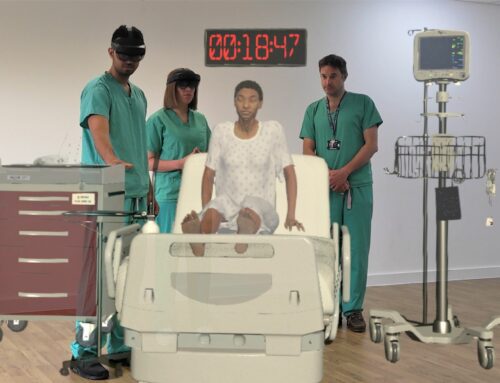Author: Donovan Quill, President and CEO, Optime Care
Thirty million Americans living with a range of 7,000 rare or orphan diseases require a high level of therapy adherence support, with individuals having higher medical needs, often missing work, retiring early and relying on caregiver assistance. All of this leads to considerable direct and indirect economic burden for the patient, the unpaid family caregivers and the health system – in addition to the medical costs of managing the disease and other costs, such as modifications to the home or vehicle.
Technology-enable care—including wearables, virtual assistants, sensors, remote monitoring devices, portals and apps—presents a significant opportunity to consistently reach specialty patients, enhance care and improve outcomes. A customized telehealth option is essential for enabling discussions and addressing patient challenges and needs, a drug’s impact on overall health, assessing the number of touch points required each month, follow-up and staying on top of side effects.
What’s more, the availability of cyber-based health information and online rare-disease patient groups has led to the emergence of the “expert” patient, who seeks a collaborative and empowering relationship with their physician. This is important for enhancing continuity of complex care management for this population, but these patients face considerable challenges that impact every stakeholder involved in the patient’s journey.
Technology options, combined with a patient-first approach, represent the most optimal way to meet the complex needs of patients with orphan and rare diseases. This combination helps to address compliance and adherence more effectively, while relieving the economic burden of managing patients in a way that improves outcomes. This approach is effective because it includes targeted programs and services that deliver specialized expertise that goes well beyond the scope of capabilities provided by traditional, legacy care organizations that are simply built for scale. Reliance on technology and data better informs critical decision making.
For this reason, providers, payers and other stakeholders are investing in ways to optimize disease management and enhance the patient journey to improve outcomes. The most effective innovative solution partners offer a patient-first approach that includes high-tech connectivity, specialty Rx pharmacist expertise–critical for securing insurance coverage—care coordination and strategies to improve compliance and minimize the daily impact of rare and orphan diseases.
To make the most of the technology revolution, look for a pharmacy, distribution and patient management organization that offers technology-focused and patient-first care strategies.
Telehealth
A lesson learned from the COVID-19 pandemic: telehealth is an important component in any patient-first approach. Look for a partner that offers a fully integrated telehealth option to provide care coordination for patients, customized care plans based on conversations with each patient, medication counseling, education on disease states and expectations for each drug.
Each touch point should have a care plan. For example, a product may require the pharmacist to reach out to the patient after one week to assess response to the drug from a physical and psychological perspective, asking the right questions and making necessary changes, if needed, based on the patient’s daily routine, changes in behavior and so on.
Capturing information in a standardized way ensures that stakeholders receive the same assessment based on each drug, which can be compared to overall responses. Information is gathered by an operating system and data aggregator and shared with the manufacturer, who may make alterations to the care plan based on the patient story.
The most effective telehealth solution should be designed to streamline patient enrollment, maximize interaction with patients for adherence and compliance, and provide continuity of care to avoid lapses in therapy. It should rely upon dedicated team members who have expertise in every aspect of the patient’s drug and can address every question and concern from patients, physicians, providers, pharmacists and payers.
Patient-First: High Touch Meets Technology
A pharmacy, distribution and patient management organization offers a patient-first strategy for rare and orphan disorders, as well as personalized care programs designed to maximize the benefit of the therapies prescribed for patients. The goal is to improve quality of life for both patient and caregiver with a dedicated support system for positive outcomes and long-term well-being.
The right patient-first partner can tailor IT, technology and data based upon client needs, combined with a high-touch approach designed to improve patient engagement from clinical trials to commercialization and compliance.
A patient-first care team typically includes a program manager, care coordinator, pharmacist, nurse and specialists who are 100% dedicated to the disease state, patient community and therapy. This is a critical feature to look for in a patient-first partner. The goal is to balance technology solutions with methods for addressing human needs and variability.
A patient-first approach also enables wholesale distributors, specialty pharmacies and hub service providers to connect seamlessly, rather than operating in siloes. This strategy improves continuity of care, strengthens communication, yields rich data for more informed decision making and improves the overall patient experience.
What’s more, this care model manages issues related to collecting data, maintains frequent communication with patients and their families, and ensures compliance and positive outcomes.
Important Factors in Effective Patient-First Strategy
With a patient-first strategy the specialty Rx pharmacist works directly with the patient, from initial consultation and across the entire patient journey, providing counseling, guidance and education based upon individual patient needs. The specialty pharmacist also develops an individualized care plan based on specific labs and indicators related to patient behavior to help gauge the person’s level of motivation and identify adherence issues that may arise.
The most effective patient-first partners enable patients to contact their pharmacist 24/7 and offer annual reassessments that ensure that goals of therapy are on track and every challenge is addressed.
Finding a Patient Management Partner
Providers can seek a patient-first management partner – often through a pharmaceutical company — that emphasizes technology capabilities and offers a suite of comprehensive services tailored to maximize the therapeutic opportunities for the treatment of rare and orphan disorders. This provides a trusted path for patients and other stakeholders involved in the treatment journey, adding much-needed support for the patient’s family and caregivers, and enabling them to become more engaged and take ownership.
The best specialty partners have expertise in navigating the insurance landscape and prior authorization process, as needed, and knowledge of how to monitor and encourage compliance. It is also important to find a partner with dual accreditation from the Utilization Review Accreditation Commission (URAC) for compliance with specialty pharmacy and the Accreditation Commission for Health Care (ACHC) for specialty pharmacy services. This demonstrates commitment to providing quality care and services to these patient populations.
In today’s complex healthcare environment, the care management solution for patients with rare and orphan diseases should meet the needs of everyone involved in the patient’s journey, from specialty drug manufacturers to pharmacists, caregivers and physicians—ideally delivered from one central point of contact.












